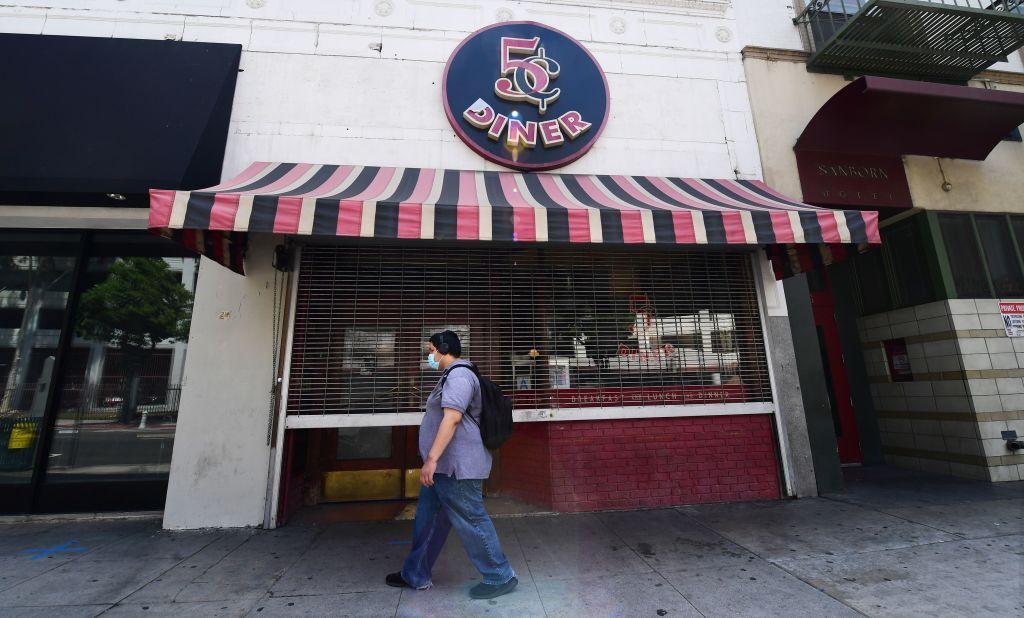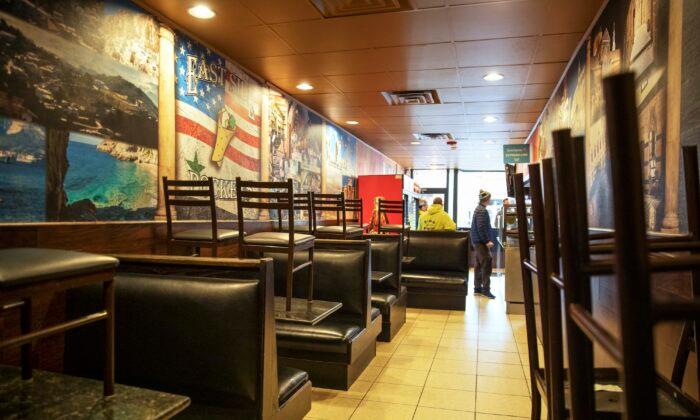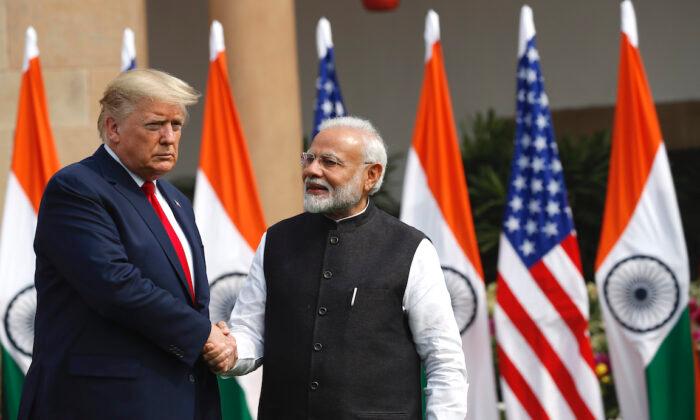As the country starts reopening, a new reality will meet those fond of dining out—many restaurants have closed for good and most others are struggling to get back to the statuses they previously enjoyed in their communities.
David Chang opened Momofuku Noodle Bar in New York City in 2004. Since then, his company has come a long way with restaurants in Washington, New York City, Las Vegas, and Los Angeles. Award-winning Chang has to his credit a New York Times best-selling book, Momofuku, and an original non-fictional Netflix series.
But on May 13, as the company assessed each of its restaurants and their financial viability amid the CCP virus pandemic, Chang had to take an “extremely difficult decision” to forever close two of his restaurants—Nishi in New York City and CCDC in Washington.
As part of its cost-cutting, Momofuku is also shifting its 15-year-old Ssäm Bar in NYC from East Village to South Street Seaport, where its team will be merged with the company’s another restaurant, Wayo.

Saffron Table in Bozeman, Montana, served south Asian cuisine and relied on the “love” of its local community for 6 years. The restaurant linked a “family’s culture, heritage, and food” across continents and went from offering curbside service on March 16 to closing forever on April 28.
“As Bozeman begins to reopen, there is much uncertainty ahead for our restaurant and the entire industry. It has taken a while to think all this through but I feel it will now be best to close the doors of Saffron Table permanently,” said owner Andleeb Dawood in a statement.
Accumulating Debts
Shah Jada Elias started Prince Kabab & Chinese Restaurant three years ago in Jackson Heights in New York City. It took him two years of struggle to start making a profit and just when the restaurant had started to meet his dreams, the pandemic happened, forcing him to close his eatery for three months.“We are a victim of the coronavirus,” said Elias. “If this condition continues, we'll be begging. How will I survive?”
Elias explains why many restaurants are closing down because of the CCP virus pandemic: “Rents in New York City are extremely high. I pay $20,000 every month for this space.”
While profits have been nil, Elias has accumulated a debt of $60,000 just because of the rent. “Every day before the coronavirus my restaurant was earning $5,000, now it earns only $300-500. I can barely pay salaries with this money.”
Elias opened a curbside service on May 15 and applied for a PPP loan of $18,000 on Wednesday. “With this loan we'll be hardly able to cover the daily operations. Government, please take care of us.”
“Remove the rent and provide a bigger loan. Otherwise we can’t survive.”

“All restaurants operate on razor-thin margins, but some are thinner than others. In the case of Nishi and CCDC, the margins were particularly challenging,” said the company. “As we looked at new realities, neither restaurant had enough cushion to sustain the shock of this crisis.”
Guidelines for Reopening
In upstate New York in Fulton county, Sheriff Richard Giardino is concerned that as the county reopens, many small restaurants may not be able to reopen as they can’t provide 6 feet distance between the tables and can’t afford plastic shields as recommended by the Center for Disease Control (pdf) this month.“I’m concerned mostly for the restaurants being hit the hardest because those are the ones that rely on small areas and a lot of people to make a profit,” said Richard, adding that he fears two restaurants in his county of 55,000 people will close forever.
In Johnstown, New York, Lisa and Todd Richard set up the eight-table Hot Dog Hut Cafe 21 years ago. When the shutdown happened, they closed their normal operations and put two tables outside where customers could collect their take-outs.
“We are small, we have eight tables in here. So you take out four of those to give them space and we are thinking we are not going to open our restaurant for four tables eating,” Lisa told The Epoch Times over the phone. “Until there is probably a vaccine. We don’t want to fight the people, we don’t want to upset them.”
Krishnendu Ray, the Chair of the Department of Food and Nutrition Studies at New York University, told The Epoch Times in an email that social distancing rules are mostly going to work for small takeout joints and ghost kitchens.

“They will probably increase their sale and their owners and workers could make a living if restaurant delivery apps are constrained to take a reasonable cut of 10-15 percent instead of the current 25-30 percent,” he said.
Elias says as New York City opens and restaurants start operating with social distancing, his 65-seater eatery will be reduced to accommodate only twenty and profit-making will continue to be difficult.
‘Serious Dent’ into ‘Urban Culture’
On any day before the pandemic, Prince Kabab & Chinese Restaurant was crowded with a multi-ethnic crowd—the food trolley near the door offered Pakistani, Indian, and Bangladeshi cuisine, while the counter at the rear end of the hall decked with Tibetan and Himalayan motifs served Nepali and Tibetan food.Just like Chang, the son of Korean immigrants who brings an ethnic touch to his cuisine and restaurants, Elias’s restaurant brings a cultural experience to what he serves and how he serves. Ray says closure of restaurants around the country because of the pandemic threatens this “interesting urban culture.”
“Poor and middling transnational and intra-national immigrants rarely design buildings, make movies or produce Broadway shows—which need investments of multiples of millions of dollars—but they do design their shops and stores and restaurants that give a city its real color and aroma at the level of the street,” he said.
Ray said the closures will also threaten the dreams of the common man in the country. “Restaurant work is not only about unremitting toil but it is also about the dreams and aspirations of common people making the best out of mobile lives.”





